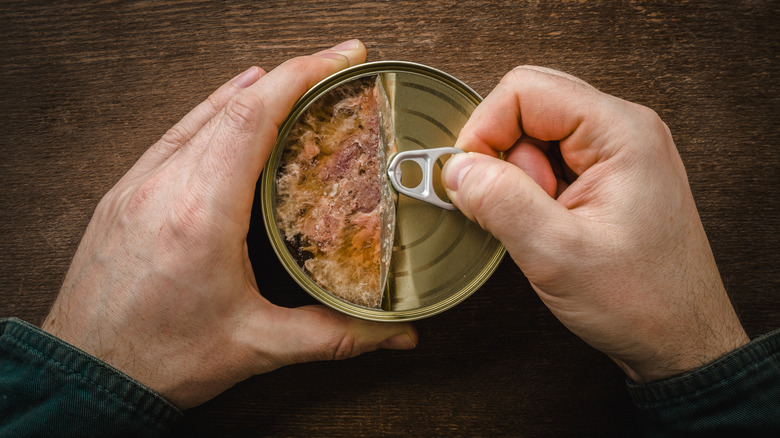Why You Should Never Can Cured Meats
What were once mainly eaten on a salad or sandwich, cured meats have become a rising star in the food scene in recent years, mostly because of the popularity of meat and cheese trays, also known as charcuterie boards. Even though they've recently gained popularity, cured meats are by no means a new phenomenon. According to Volpi Foods, curing meats is an ancient art dating back to 3000 B.C.E.
Curing meat is a process of preservation by using salt to reduce the production of bacteria so that it can stay edible for a longer period of time, as described by Eat Cured Meat. Some modern examples of commonly consumed cured meats are pepperoni, bacon, ham, salami, prosciutto, and bologna, as reported by Spoon University. Whether enjoyed hot or cold, on a sandwich, in a salad, or on a charcuterie board, there is one way that you shouldn't consume cured meats.
A lack of safety testing
Another method of preserving food is home canning. It is something you can do provided that you use the proper equipment, such as a pressure canner, per The Prairie Homestead. Even though you can successfully preserve cuts of meat like poultry, beef, pork, and fish with home canning, it may be tempting to home can ham or bacon. However, experts warn that you should never try to home can cured meats.
Since the curing process removes moisture from meat to help stop the growth of microbes, it does that by altering the state of meat, which makes it not as tender as fresh meat, according to Masterclass. That altered state is the reason why you can't home can cured meats. Because the curing process changes the density of the meat, and that changed density has never been tested for safety, raising the risk of lower quality and over-processed meat, as referenced by Healthy Canning.

